In the heart of the local cosplay community, few couples shine as brightly and authentically as Angelo Tablante Ampil and Mary Reginald Guidote. Through shared creativity, resilience, and a deep commitment to self-expression, they’ve built not only a partnership but a haven—for each other and for others still navigating their identities.
Their journey together, rooted in costume creation and gender discovery, is a powerful reflection of what it means to live and love truthfully, both in and out of character.
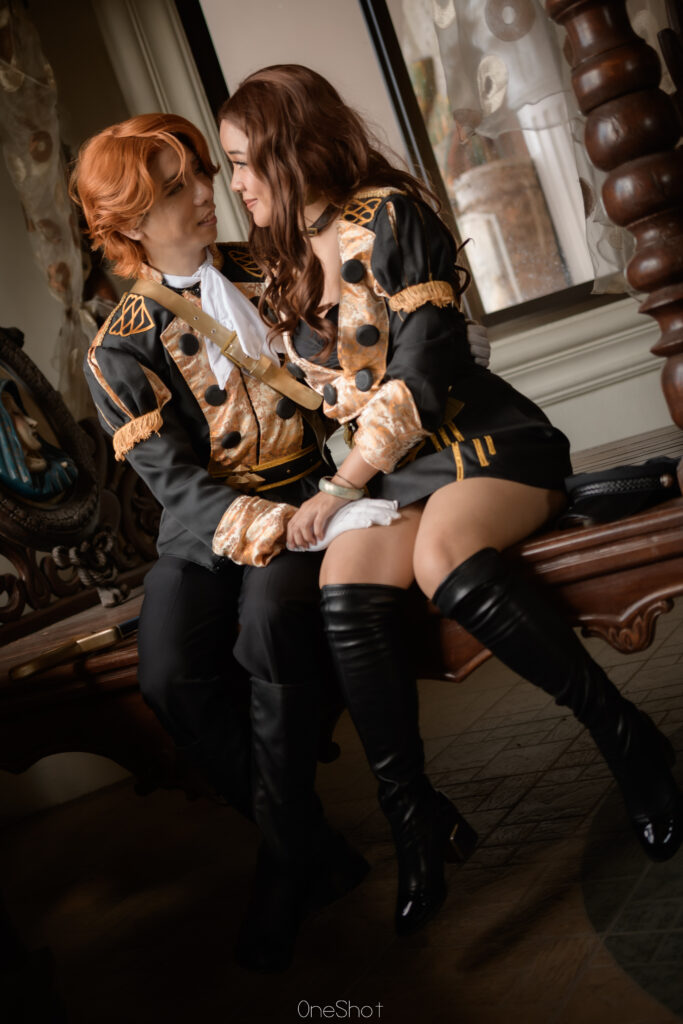
Cosplay and Identity
For both Angelo and Reg, cosplay began as a personal passion long before it became a shared endeavor. Reg recalled being drawn to cosplay through the creativity of others: “I got into it seeing people online make their own versions of characters from video games and musical theatre. I’ve wanted to try it since I was probably grade school or high school but only started after college.” Their early years were focused on school, where costume-making was a regular part of the school play scene.
Gelo’s roots were in craftsmanship. “I think what really got me into cosplaying was the making aspect of it,” he explained. “It started with small masks, hand props, and slowly evolved into the business I manage today.” As partners, their shared love for crafting naturally merged into their relationship. “Since both Reg and I are makers, we love learning from each other and helping each other in our own projects and commissions. Sometimes we even spend our dates helping each other out in our respective workshops.”
Beyond the creativity, cosplay also became a platform for exploring gender and identity. As a genderfluid individual, Gelo shared, “I feel the need to get in touch with both my masculine and feminine side. I’m a male by default in my everyday life so when I cosplay women, I feel like I’m able to also feed my need to be feminine through these characters.”
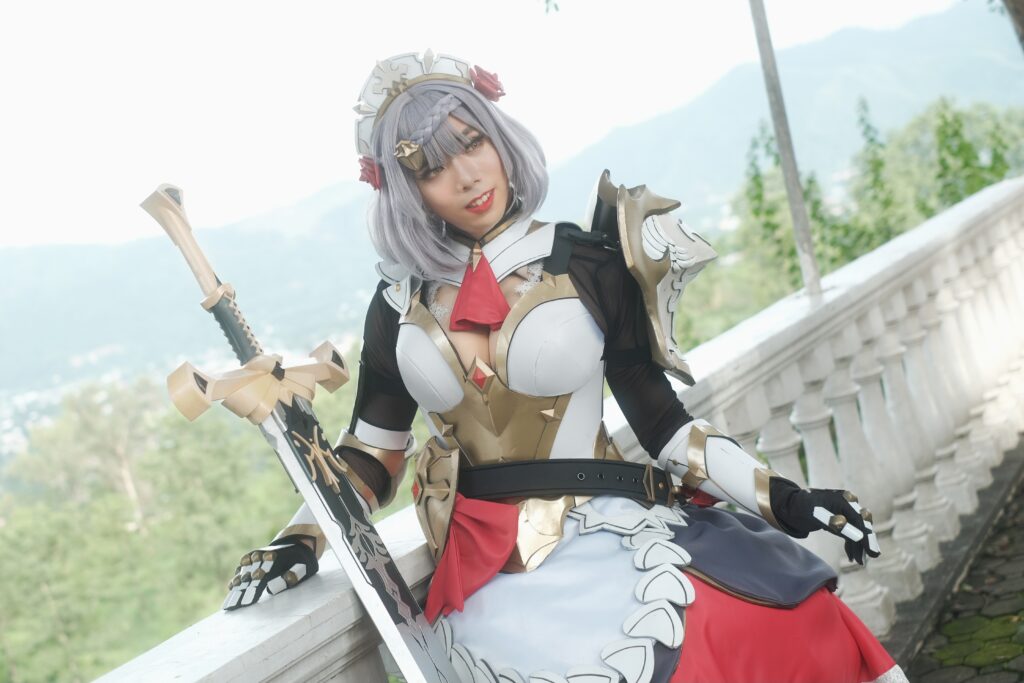
For Reg, who identifies as nonbinary, cosplay affirms that identity is not performance-based. “I have to tell myself that the clothes I wear and the body I have aren’t what assign my gender identity. Sometimes it’s funny to play to the misconception that non-binary people look androgynous, but gender is an identity, not a performance. I shouldn’t have to look a certain way to feel valid.” While they typically present as feminine, Reg acknowledged that others often forget or mislabel their identity. “Some haven’t normalized asking pronouns yet,” they noted.

Feeling Seen in Character
When asked about the first cosplay that made them feel powerful and seen, Gelo pointed to Purah from The Legend of Zelda: Tears of the Kingdom. “She’s a scientist and highly respected woman in the game. I love that she also has a kooky crazy side like me but is still such a boss lady,” he shared. “When Reg made this costume for me I think it really upped my confidence.”
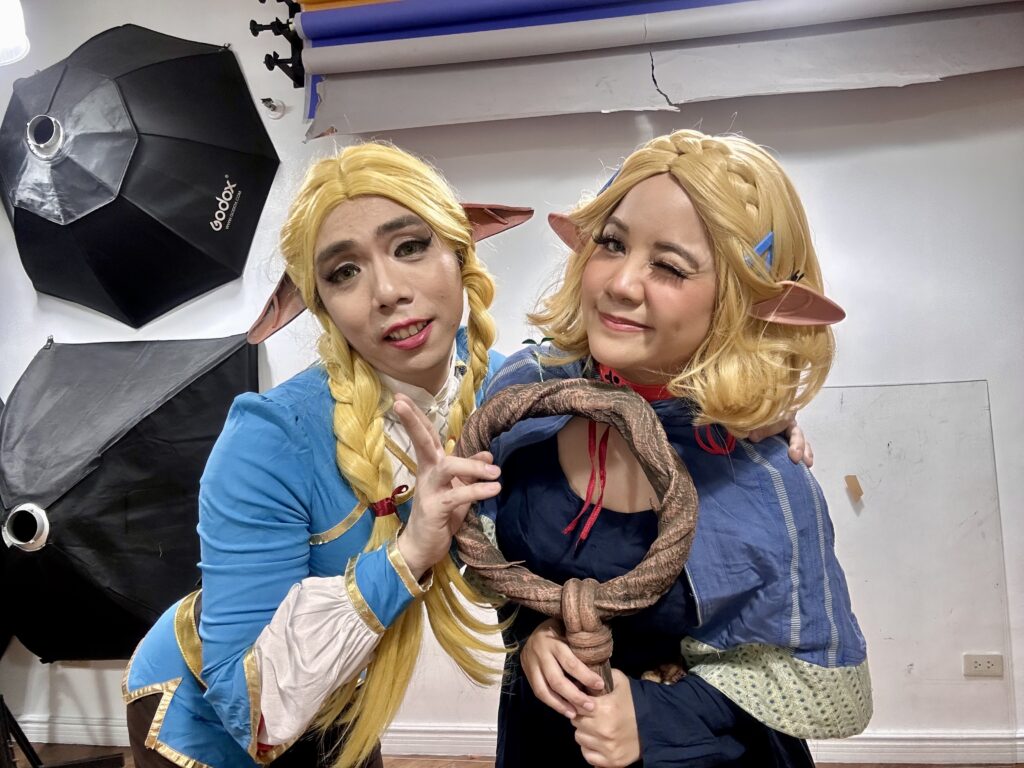
Reg, on the other hand, admitted that while they haven’t yet cosplayed a nonbinary character, there are moments of euphoria when dressed as male characters. “There are so few non-binary characters I relate to,” they said, “But I feel euphoric during the rare times I can dress as a male character.”
Gender Journeys and Self-Discovery
Reg described a long process of introspection before coming to terms with being nonbinary. “In my teens and early 20s I used to think that I was still too young to be called a woman, so I waited and waited for the time that label felt right to me. It never did.” The pandemic became a turning point. “I started really going into gender identities and what people online had to say… Ultimately I had to do some introspection and ask myself why it felt so wrong for me to be called a woman.” They recalled an early memory that hinted at their identity: “When I was little I would often tell my family that I was a girl on the outside but a boy on the inside.”
Gelo’s gender journey also took root around 2019 or 2020. “I was feeling like cosplaying armor was just too much trouble for what it’s worth,” he said. “I also felt like I wanted to stray farther from being a man because I didn’t identify nor did I feel comfortable with ‘guy talk’ where they talk about girls and their chances for dating them. It felt really icky.”
Judgment, Safety, and Support
Unfortunately, their experiences haven’t always been safe or affirming. “I’m AFAB,” Reg stated plainly, “So unfortunately the feeling of being unsafe in public or in online spaces will linger regardless of what I am wearing.”
Gelo has received harsh criticism for crossdressing: “I’ve had a lot of comments about how they loved my cosplay but are disappointed that a man cosplayed their favorite character. Some even said I ‘ruined the character.’” While it’s tempting to ignore those remarks, they can still sting. “Honestly, Reg has been very helpful when things like these happen and always knows the right things to say.”
Beyond individual reactions, Gelo also faced professional bias. “Sometimes I don’t get picked for gigs by companies or they prefer that I cosplay someone more aligned to my default gender,” he shared. “I was once commissioned to cosplay a gender-swapped version of a character despite me never actually doing gender swap cosplays. While I did the job to the best of my abilities, it honestly didn’t feel right.”
Both believe there’s still a long way to go in how people understand gender expression in performance spaces. “In con settings it is always OK to ask for pronouns,” Reg emphasized. “Looking more masculine, feminine, androgynous—it is what it is. It’s for the person to have feelings about, not for others to comment or have opinions about.” Reg also called out offensive portrayals: “I highly dislike whenever cis men crossdress as a joke… as if it’s funny to wear a dress while looking a certain way. It’s not.”
Gelo added, “People of any gender can crossdress, even straight men. So long as they do it with respect, exploring one’s feminine or masculine side through cosplay is a great way to express and understand oneself.”
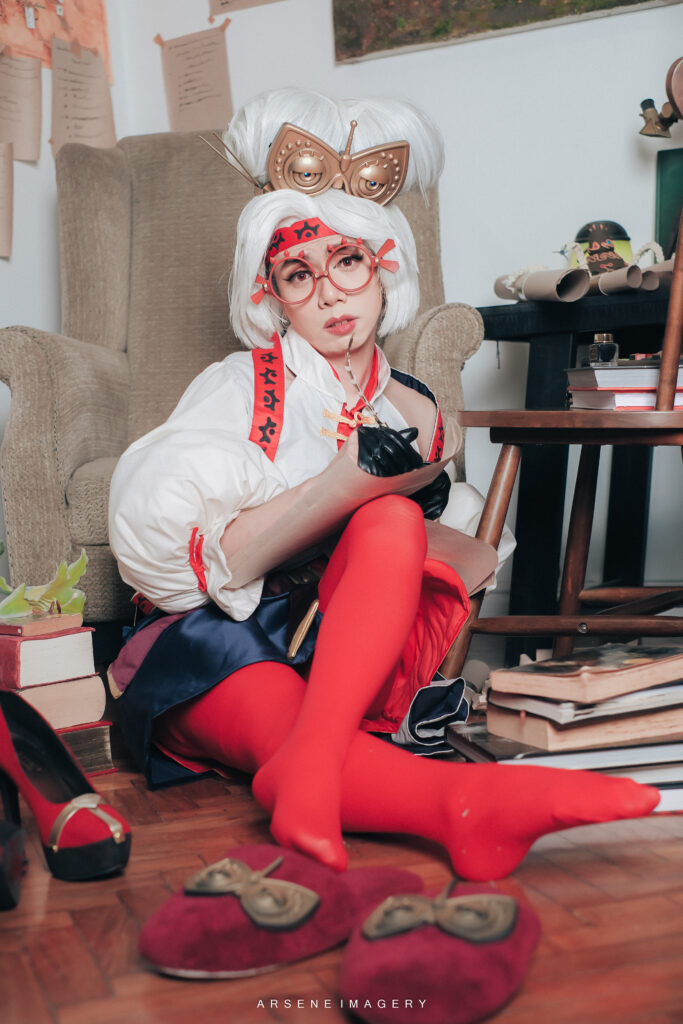
Building Each Other Up
Their relationship has played a crucial role in their growth, both as artists and individuals. “My family likes to say that Gelo is prettier than me and I’m the handsomer one,” Reg joked. “We’re both absolutely adorable. It’s just that one looks like the sun and the other looks like the moon.”
Cosplay, for them, is not just shared but collaborative. Reg fondly recalled making Gelo’s Purah costume and doing his makeup. “He already has pretty features similar to Purah, so I just had to enhance them.” Their shared closet includes characters like Asuka, Marcille, Zelda, and Lynette.
Gelo expressed deep gratitude for Reg’s support. “Because of crossdressing I’ve been more interested in really knowing my gender identity… I’m so happy that Reg has been extremely supportive of me in this process of knowing myself.”

Advice to Queer Cosplayers
To queer couples or individuals nervous about cosplaying publicly, Reg advised, “Cosplay who you want. If you’re scared and want to cosplay in public, it’s good to go together like a buddy system. Make sure you check in with others you’re safe with. Let them know where you are in case of emergency.”
Gelo echoed the importance of support: “The important part about doing something that’s scary is having each other’s backs. I always wanted to go out as a woman in public but I’ve always been scared. I talked to Reg about this and they said they’ll be there with me. I’m quite excited actually.”
Community, Change, and Pride
On the safety of the local cosplay community, Reg noted that while it isn’t fully heteronormative, there’s still room for growth. “There’s still preferential treatment for those who are really good looking or passable… I just wish others who aren’t considered conventionally attractive were treated just as nicely.”
Gelo agreed: “While there are more queer people here than in many other spaces, I still get comments in person like someone saying they’ll get nightmares thinking I’m the character—as a joke. It’s important to get support from fellow LGBTQ friends.”
When it comes to finding safe spaces, both emphasize caution and self-awareness. “Ask yourself how vulnerable you’d feel and if you would allow yourself that vulnerability if the possibility for hurt is there,” Reg advised. Gelo mentioned Love Yourself as a helpful resource for gender-affirming consultations.
Both expressed a desire to see more panels and workshops focused on queer experiences in cosplay, including guidance on safe binding and tucking, and increased opportunities for crossplayers.
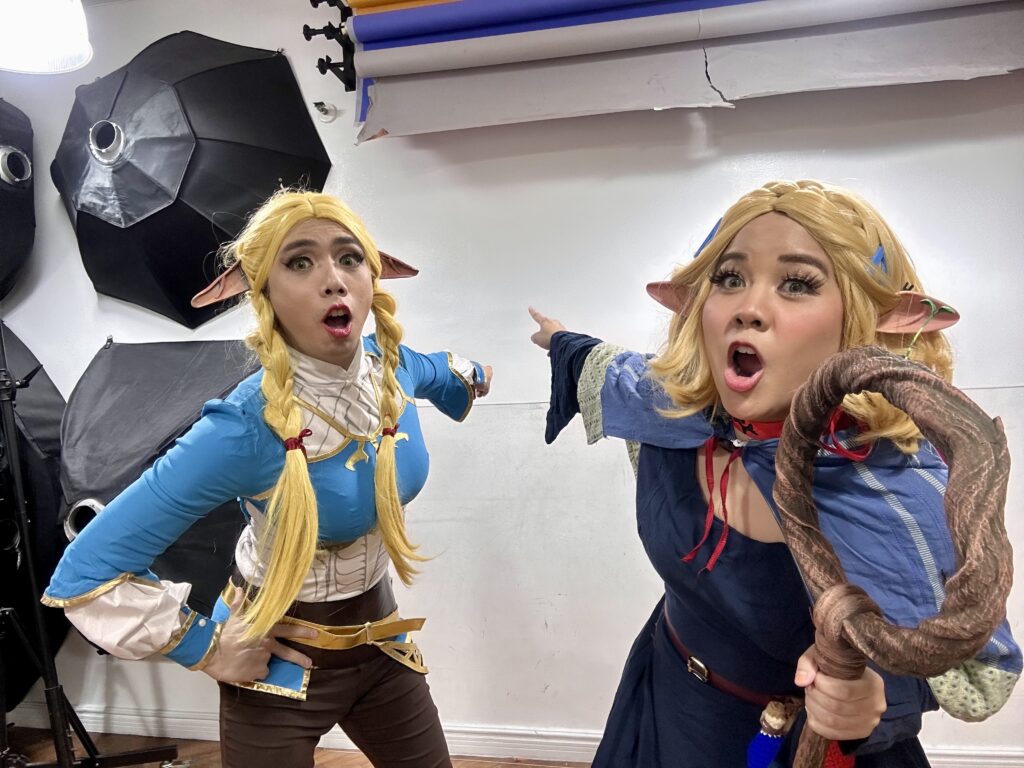
Pride and Looking Forward
Pride Month, for Reg, is about recognizing privilege and offering support. “The security of knowing that my family is there for me and tries to understand me is something I don’t take lightly… I offer to listen to my friends whenever I am able.”
For Gelo, Pride has evolved from being an ally to embracing his own identity. “It’s clear how important it is to have safe spaces and safe people to talk to… especially with a trans brother, a nonbinary partner, and myself as genderfluid.”
Looking ahead, Reg is crafting costumes from The Stormlight Archive and returning to kendo practice, encouraging others to join their LGBTQ-friendly club. Gelo continues to expand his cosplay work and deepen his understanding of gender through creativity.
Their love, built on mutual care, craft, and discovery, is a reminder that cosplay can be more than just performance. It can be personal. It can be powerful. And it can be home.



